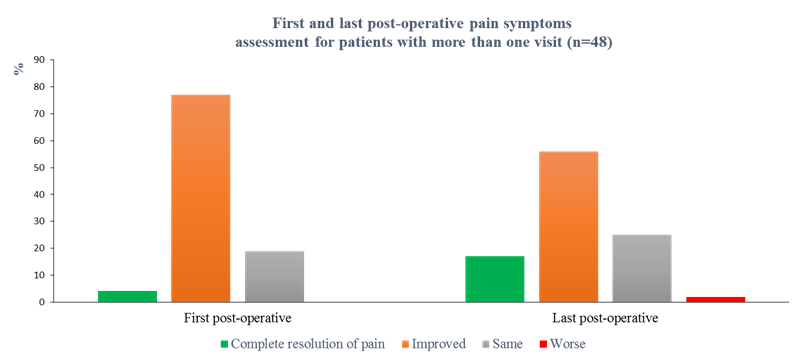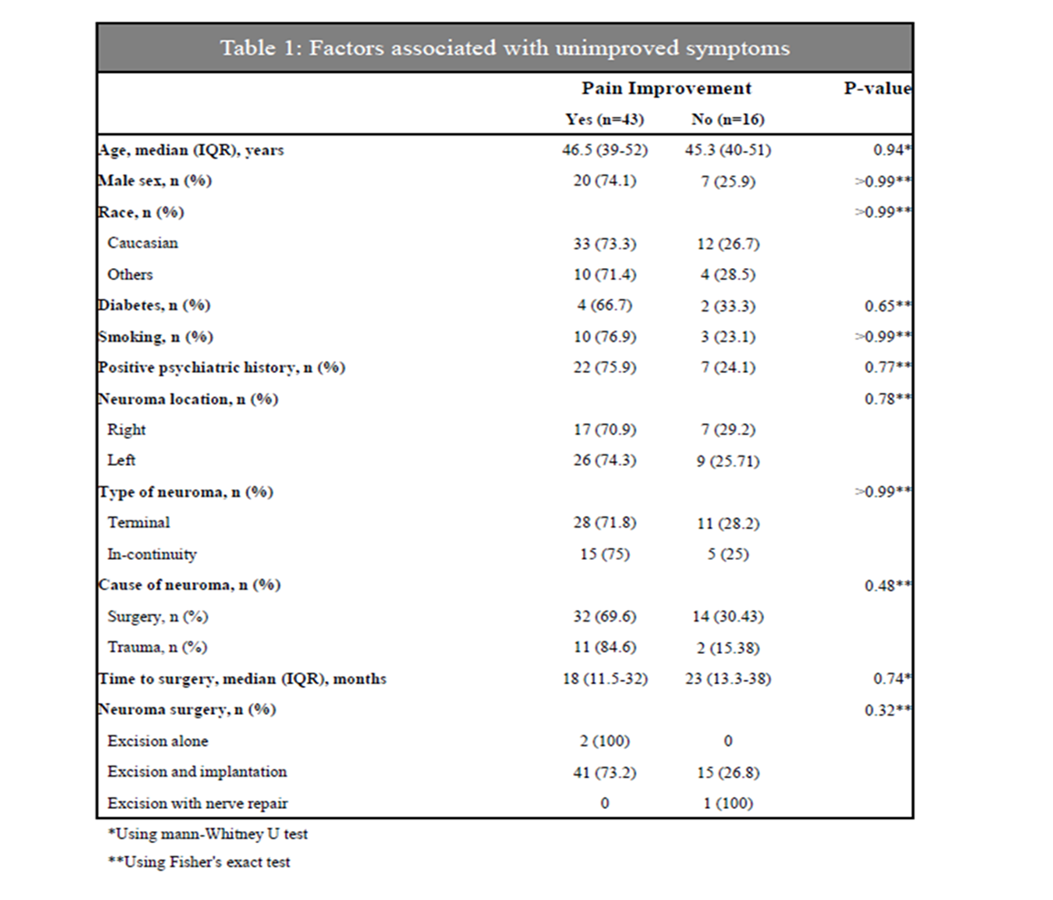Etiology and Outcomes of Surgically Treated Sural Neuromas
Linda Gamo, Bsc1; Jonathan Lans, MD2; Niek Wolvetang, MD2; Verhiel Svenna, MD2; Neal C Chen, MD3; Kyle R Eberlin, MD4
1Massachusetts General Hospital/Harvard Medical School, Boston, MA, 2Orthopaedic Hand and Upper Extremity Service, Massachusetts General Hospital, Massachusetts General Hospital/Harvard Medical School, Boston, MA, 3Massachusetts General Hospital, Boston, MA, 4Orthopaedic Hand and Upper Extremity Service, Massachusetts General Hospital, Massachusetts General Hospital, Boston, MA
Introduction: A neuroma results from disorganized regeneration of a nerve after injury. Many studies have investigated the presentation and treatment options for neuromas, but few have focused on sural neuromas. The aim of this study was to describe the causes, treatment, and outcomes of operatively treated sural nerve neuromas and to describe the factors associated with persistent or unchanged post-operative pain symptoms.
Materials & Methods: Patients with surgically treated sural neuromas over a 14-year period were identified using CPT-codes for nerve injury, nerve repair, neuroma and neuroma surgery. Patient demographics, pre-operative treatment characteristics, post-operative symptoms, type- and etiology of the neuroma were collected retrospectively by medical chart review. Post-operative pain symptoms were categorized as complete pain resolution, improvement of pain, no change in pain or worse pain. We identified 64 sural neuromas with a median patient age of 45.3 years (IQR:38-51) that were followed for a median of 2.3 years (IQR:1.0-9.0). 59 patients had follow-up data for analysis. A bivariate analysis was performed to evaluate the factors associated with post-operative pain symptoms.
Results: The most common cause of sural neuroma was iatrogenic during surgery of the lower extremity (78%). Sural neuromas secondary to lower extremity surgery or trauma showed an improvement of 70% and 85%, respectively. Nerve excision and implantation in muscle was the most common surgical technique used (69%) and were most commonly performed by foot- and ankle orthopaedic surgeons. At the final post-operative visit, 73% of patients had either complete resolution or improvement in their pain (56% improvement, 17% complete resolution). Seven patients underwent a second neuroma operation of which four reported some or complete symptom resolution. Only one patient (2%) had worse symptoms postoperatively. No factors were identified that were associated with unchanged post-operative pain.
Conclusion: Sural neuromas may arise from prior surgery or trauma to the lower extremity. Surgical intervention results in improvement or complete resolution of pain symptoms in 80% of patients either after one or two neuroma operations.

Back to 2019 ePosters
